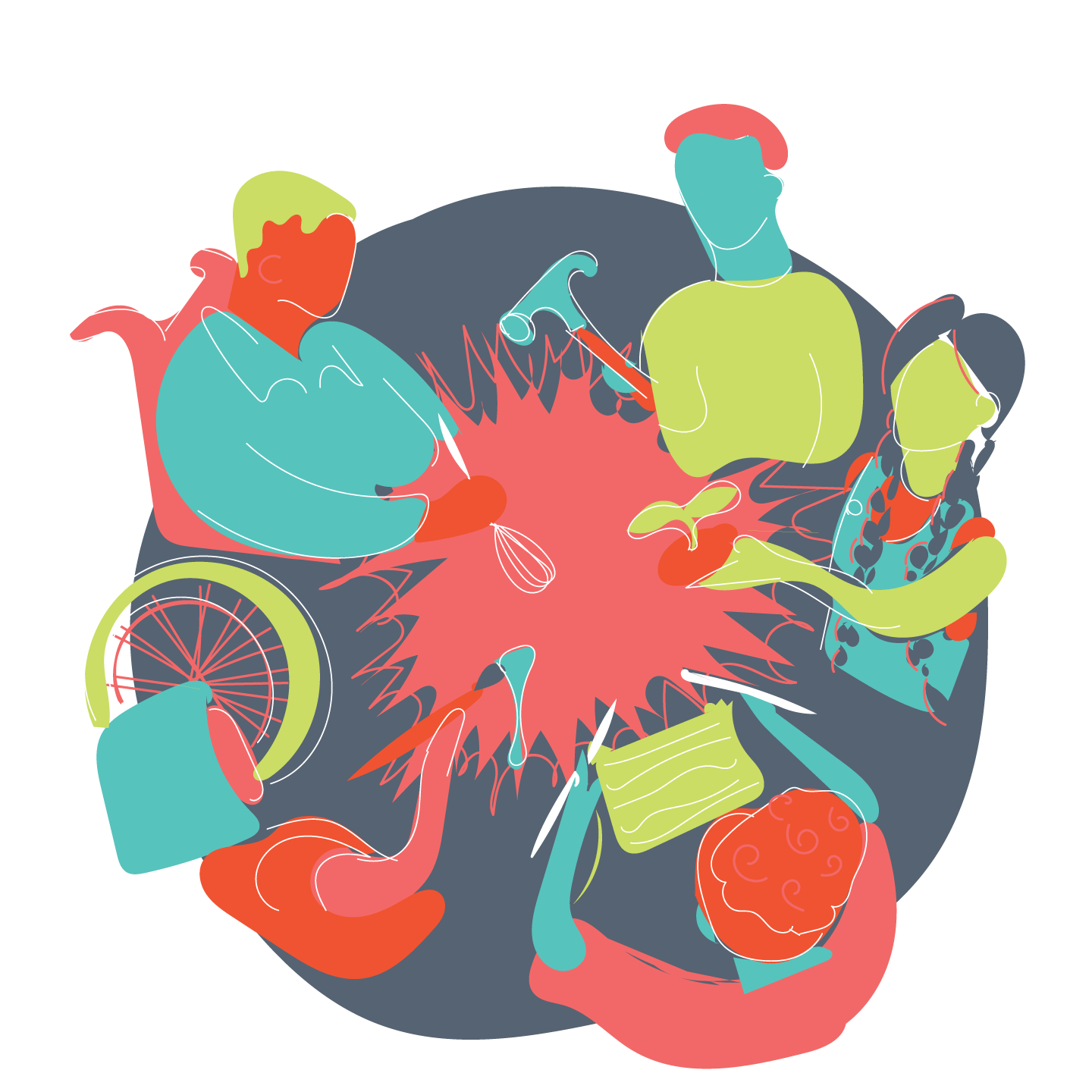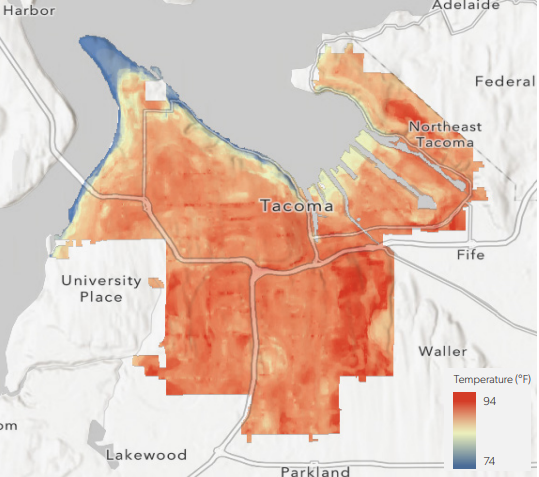Our climate has reached a point of crisis. Here we are living through unprecedented heat, extreme downpours, wildfire smoke, and other impacts, with their severity increasing year-by-year. In 2019, Indigenous and youth climate strikes demanded more City climate action. In response to community concerns, the Tacoma City Council declared a climate emergency. This Plan sets climate strategies and actions that get us on track to address the climate emergency by 2030. The science is clear – we need to act urgently.
WHAT DO WE MEAN BY A JUST TRANSITION?
Shifting our economy away from fossil fuels and other extractive practices without leaving anyone behind. A new, just economy prioritizes living wage jobs in green sectors, human rights, and protection of our life-giving natural systems.Climate change is not the only crisis our community is facing. Therefore, City Council asked for climate solutions that advance other community priorities – like public health, economic opportunities, social justice, and recovery from the COVID-19 pandemic. On top of these needs, our community is growing – we need to accommodate more people and offer more services. This is the context we are living in, and so it is the context we are planning in. Our approach to anti-racism, through a just transition away from fossil fuels, must bring greater benefits to and reduce burdens for our BIPOC and other frontline communities. This Plan lays out a path to realize these outcomes.
WHAT DO WE MEAN BY EQUITY?
Equity is when everyone has access to the opportunities necessary to satisfy their essential
needs, advance their well-being, and achieve their full potential.
(Racial Equity Alliance)
CAP Community Participation
The climate action planning process involved more than 1,000 participants across a 14-month process, which prioritized frontline community members. To promote accessibility and participation, the City paid frontline community members to attend meetings, give their input, connect their social network to the planning process, and participate on an Environmental Justice Leaders Workgroup. The City also partnered with and compensated frontline organizations to connect their communities to the process.
- 33 climate ambassadors
- 17 workshops
- 27 climate presentations
- 10 EJ Leaders Workgroup members
- 9 frontline “host” organizations

WHAT DO WE MEAN BY FRONTLINE COMMUNITIES?
Frontline communities tend to experience inequity in multiple ways. They tend to be underrepresented, underserved, or made vulnerable; experience lower quality of life outcomes before COVID-19; or now experience worse impacts from the COVID-19 economic and health crisis. Frontline communities also include those expected to experience the first and worst consequences of climate damage.
WHAT DO WE MEAN BY OVERBURDENED COMMUNITIES?
The EPA describes overburdened communities as “Minority, low-income, tribal, or Indigenous populations or geographic locations in the United States that potentially experience disproportionate environmental harms and risks. This disproportion can be as a result of greater vulnerability to environmental hazards, lack of opportunity for public participation, or other factors.” (U.S. Environmental Protection Agency)
Despite the planning team’s best efforts to reach frontline community members, it is clear from the demographic data we collected that we are often still hearing from a disproportionate number of white, high-income community members. Therefore, staff focused on input from frontline community members to prioritize climate actions.
CAP and Social Justice
Investments in climate action can deliver healthy, affordable housing; clean, reliable transportation; protections for public health; and green, good-paying jobs. However, we will only get the benefits of climate action if we fund and staff the Plan. Failure to implement the Plan will allow climate change to worsen existing environmental, health, and socio-economic inequities.
For example, Extreme heat – made worse by the “urban heat island” effect and climate change – is one of the deadliest climate-related challenges in the United States. Urban heat islands occur in areas with large amounts of impervious surface with little green space, such as streets, sidewalks, parking lots, and buildings.
In Tacoma, urban heat islands increase maximum temperatures by as much as 6.2°F above the local baseline. Neighborhoods in Central and South Tacoma may be as much as 14°F hotter than neighborhoods in North Tacoma. Temperatures above 82°F significantly increase the risk of cardiovascular diseases, respiratory illnesses, and heat stroke. In particular, we are concerned about the safety of seniors, kids, pregnant people, people with breathing or heart issues, low-income and BIPOC community members, outdoor workers, and our unhoused neighbors.

3 PM Temperatures in Tacoma in July 2018, Tacoma Community Forestry storymap
As our climate warms, we can expect more extreme heat days in Tacoma. Neighborhoods burdened with the worst extreme heat tend to also be those historically segregated by race and income, such as through redlining and racial covenants. This history has caused gaps in generational wealth, educational attainment, health, and access to essential, life-saving technologies and services like air conditioning, health care, and public transit. We must serve these neighborhoods first.
Learn more: Earth Economics, Tacoma Community Forestry: Trees, Equity, & Health
Learn More about Engagement Processes & Community Input: